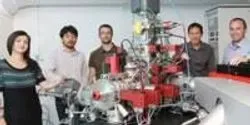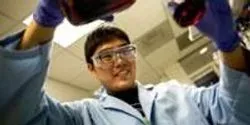nanotechnology

New research from North Carolina State University and the University of Minnesota shows that the majority of consumers will accept the presence of nanotechnology or genetic modification (GM) technology in foods – but only if the technology enhances the nutrition or improves the safety of the food.

In subway stations around London, the warning to “Mind the Gap” helps commuters keep from stepping into empty space as they leave the train. When it comes to engineering single-layer atomic structures, minding the gap will help researchers create artificial electronic materials one atomic layer at a time.

A team of New York University and University of Barcelona physicists has developed a method to control the movements occurring within magnetic materials, which are used to store and carry information. The breakthrough could simultaneously bolster information processing while reducing the energy necessary to do so.

Kansas State University researchers have developed a patented method of keeping mosquitoes and other insect pests at bay.

Scientists at EPFL have used a new imaging technique to monitor how glucose, our main energy source, is used in the body. Their findings may have great implications for diseases like diabetes.














